Sketchnoting in Dialogue – Part 2: Using Sketches in Business Conversations
In everyday business, the ability to comprehend abstract knowledge is a prized skill. Anyone who can take complicated information and translate it into a simple visual, possesses an essential competency in today’s complex world. By making business processes visible, you enable your ability and the ability of others to find solutions to complex problems. Here are three steps that can help you start building this skill!
by Martin Haussman
SHARE ARTICLE
huh? Come again?!
The majority of the participants in our bikablo training sessions are there because they want to learn how to quickly and effectively visualize complicated and abstract concepts. We also teach people how to get started with this during our brief Impulse training sessions, such as those we hold at large conferences. Once I’ve given the audience a few rudimentary visual vocabulary elements, we take on the task of creating a visualization of a complex topic. I like to use a real “huh?” statement for this, like this one:
“In the EMEA, the client pays the sales agent, who then pays the company a commission based on the earnings. In the US, the company bills the client directly and pays the sales agent a fixed fee per item sold.”
huh? Come again?!
The reality is that, every day, statements like these are flying by at the speed of sound throughout conference rooms and during PowerPoint presentations – and no one is checking to see if the audience has really heard them or if there is a common understanding.
How could we quickly visualize these statements as thought sketches? Obviously, this is not going to be the same as creating a beautiful flipchart for a presentation. Thought sketches are more of a visual re-questioning, to make sure that we have correctly understood and can, together, move forward in our thinking:
- Have I understood correctly?
- Is it correct to present it this way?
- What do I have to change so that it correctly reflects your meaning?
- What kinds of solutions can we come up with when we look at this sketch together?
So let’s take a closer look at our complicated “huh-sentence”.
Admittedly, sometimes when it comes to complex content, we visualizers feel like deer caught in the headlights. “EMEA – US – Client – Sales Agent?” Even I didn’t understand at first what all of this meant. This is why I draw what I have understood step-by-step. Each step becomes, at the same time, a question to the speaker – am I presenting this correctly?
Step One: understanding the basic structure of the content.
I start with what I have been able to understand. At first, it isn’t much: EMEA (whatever that is) and the US appear to be two different “systems” that need to be represented in contrast to each other. I will therefore divide my paper into two sections and give each of them a title.

I then go back to the speaker with a question: have I understood this correctly? If not, I take a new sheet of paper and start over.
Step Two: Identifying the players and key elements.
In both of these systems, there appear to be three identical “players”: the sales agent, the company, and the client. To represent these, I choose the simplest image that spontaneously occurs to me. And then I repeat my earlier question: “Is this right? Is anything missing?”

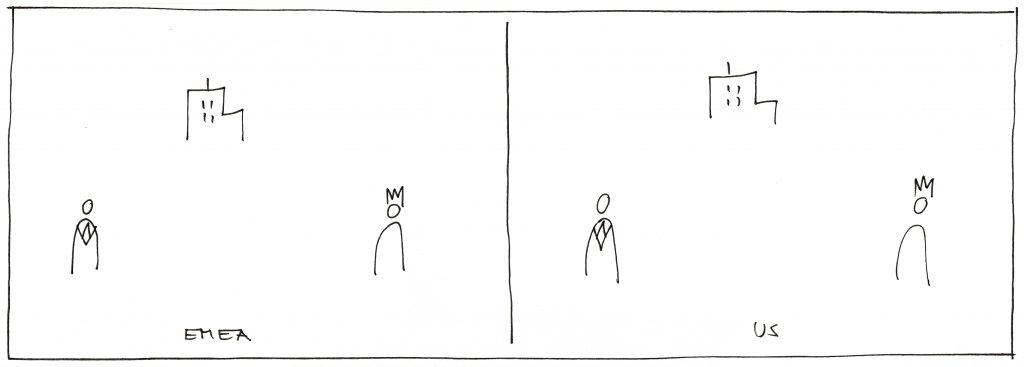
Step Three: show the interrelationships.
These three players all appear to have specific business relationships with each other, and that seems to be the sticking point. In the “EMEA” system, the client pays the sales agent …
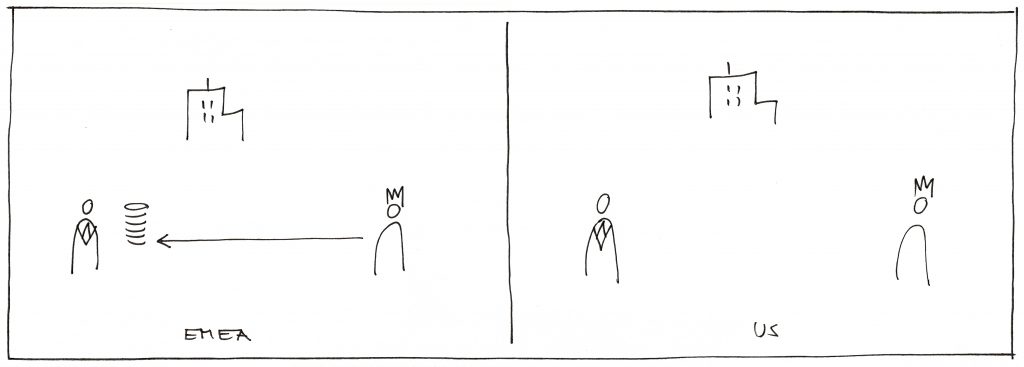
… and the sales agent pays a portion of this money to the company – the commission.

It’s different in the “US”. There, the company bills the client. At this point, it is a good idea to rethink everything, so as to stay within the logic of the “EMEA” system. What is happening with the billing is that it is reversed: the client pays the company and then the company pays a portion of this to the sales agent – the fee.
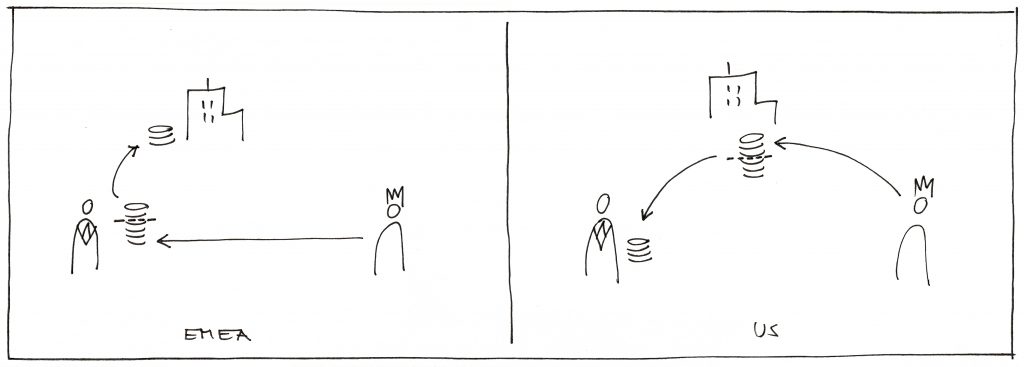
But: how can we visualize “a commission based on the earnings” or a “fixed fee per item sold?” One tip: visualization means “image plus graphic plus text.” If you can’t immediately come up with a suitable image, just write it down.
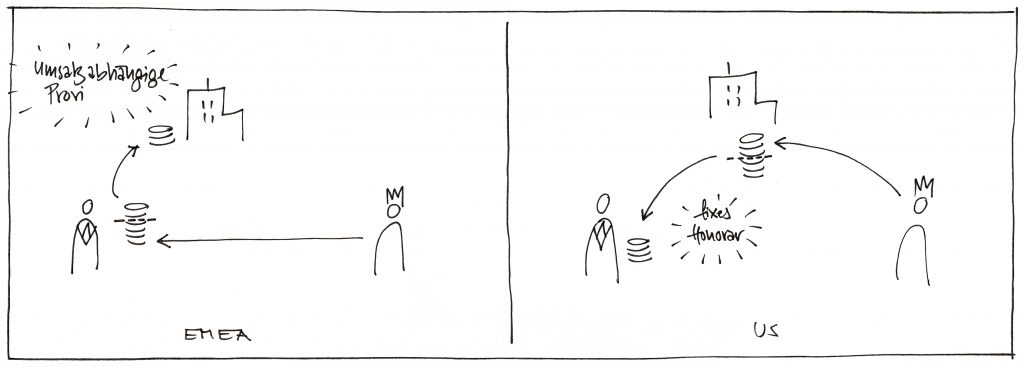
Ask for clarification from the speaker – and keep drawing!
It’s time once again to ask the speaker: “Have I understood this correctly?” It might be that he or she will say: “Yes, exactly, and this is also important . . . “ —and will take the pen and complete the sketch themselves. Or, you might hear: “I realize now that I’ve made a mistake in my thinking here – let me try to draw it myself.”
So, you see: even when you are visualizing complex business processes, drawing helps you to make detailed content clear to both yourself and to others. In the process, always check – as in this example – that the visualization represents a mutual understanding of the situation, and on this basis, collaborate on further developing ideas or concepts. And, perhaps the result will be the quick clarification of a misunderstanding or a difference of opinion – or the issue that is at the root of them!

MORE ARTICLES ON THIS TOPIC
You Might Also Be Interested In...

How to use your iPad instead of the webcam in MS Teams
Why do I want to connect the iPad to MS Teams (or Zoom)?
I would like to be able to show my iPad Screen as a tile in the normal Teams window. It should be subtle and not by sharing my screen to draw to much attention and to have a seamless switch between different views. I can i.e.
• document the meeting using OneNote or ProCreate
• easily zoom into pictures or drawing
• easily annotate pictures or digital whiteboards
• using the drawing feature while presenting your content
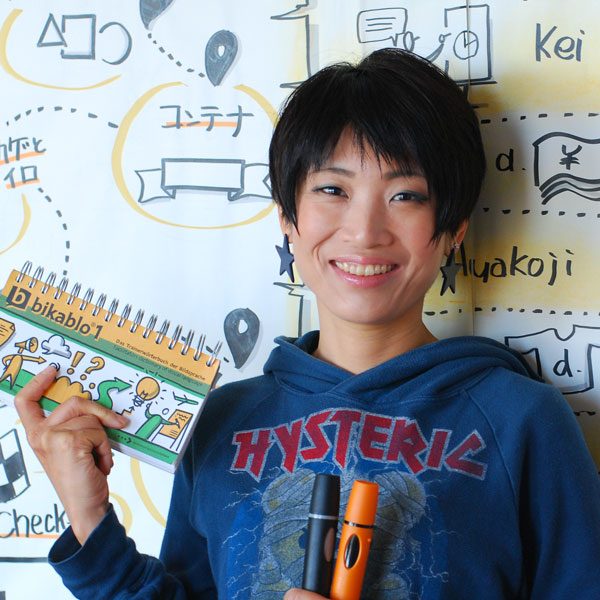
Design Thinking and Visual Thinking – a perfect fit?
In a recent interview Hiromi Hara speaks about her experience with applying the design thinking method with the help of visualization.
Hara explains that design thinking is not primarily about problem solving, rather about unveiling complex problems and getting better insight in the root cause of issues, hence the importance of the expression of individual perception and the comprehensible yet memorable depiction of thinking processes.
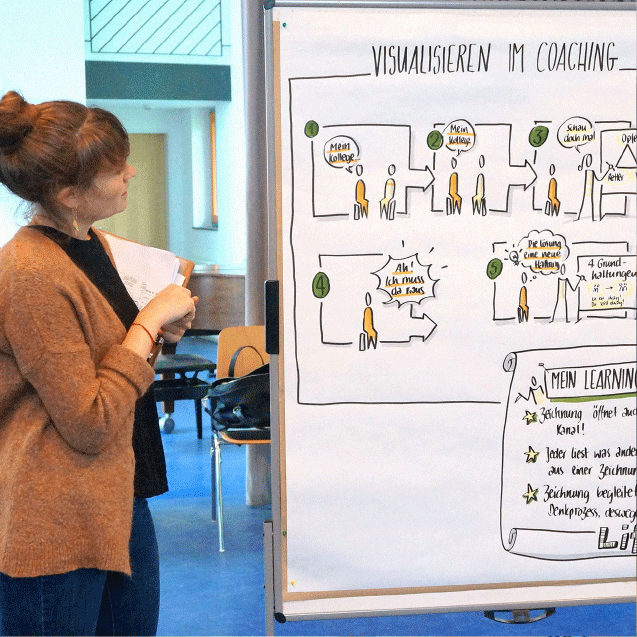
Using Visuals in Coaching
How our global trainer Jill Greenbaum got into drawing and which impact visualization has got on coaching situations.